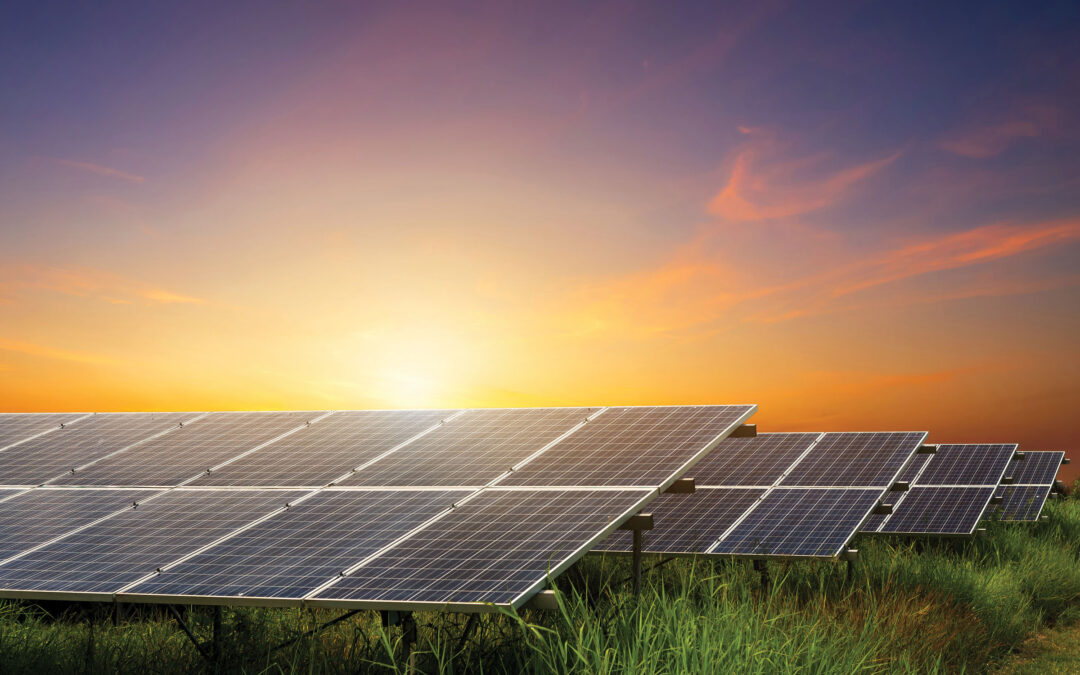August is National Water Quality Month, a time to reflect on clean water’s vital role in our health, agriculture, and environment. Solar energy is frequently associated with cleaner air, but its benefit to Wisconsin water quality is often overlooked.
Agricultural producers are increasingly turning to solar power to reap a steady income from renewable electricity generated on their land. In addition to generating healthy economic returns for farmers, solar farming yields many positive impacts for local and global environments. Beyond reducing carbon emissions from burning fossil fuels for electricity, solar farms are vehicles for revegetating farm fields, significantly benefiting local water quality.
Solar farms on agricultural land are temporary land uses, lasting up to 30 years in most cases. During this period, the solar arrays interspersed with deep-rooted vegetation can dramatically reduce runoff that would otherwise seep into groundwater, lakes, and rivers. The equipment is removed when the solar farm is ultimately retired, and the land can return to active cultivation.
Consider the recently approved Onion River Solar project in Sheboygan County. When completed in early 2023, this 150-megawatt (MW) project should significantly reduce water pollution. Onion River’s developer, Ranger Power, plans to establish plantings compatible with grazing and pollinating around and underneath the solar arrays. During the Public Service Commission’s review of the project, Dr. Paul Mathewson, staff scientist for Clean Wisconsin, testified that replacing the existing cropping regime with mixed grasses will reduce phosphorus runoff to nearby surface waters by 85-98% in the local watershed. Over 30 years, the plantings will prevent 100,000 pounds of phosphorus from being added to the local stream network. Reducing phosphorus runoff into rivers and lakes is vital to preventing algal blooms which threaten aquatic life and recreation.
Like Onion River, the recently approved Darien Solar Energy Center, developed by Invenergy, should also improve water quality in the surrounding area. A 250-MW solar project in Walworth and Rock counties, Darien will employ a very similar approach to revegetating the impacted cropland. According to the Delavan Lake Improvement Association, Darien will revegetate approximately 2,000 acres that had been under active cultivation, which will promote more thorough drainage and inhibit the likelihood of erosion and runoff polluting nearby water resources. Additionally, the plantings will provide habitat for pollinators, enhancing biodiversity.
Invenergy’s latest proposal, the Koshkonong Solar Energy Center, envisions a 300 MW solar installation extending across 2,400 acres of active farmland in southeast Dane County, upstream of the Rock River. As with Darien, Invenergy plans to establish deep-rooted vegetation amid the arrays. According to Invenergy’s filings, the mix of prairie plants and other grasses should reduce stormwater runoff by 60%, nitrogen outflow by 48%, phosphorus outflow by 53%, and total suspended solids outflow by 87%. The Koshkonong solar farm is under review at the Public Service Commission.
While providing steady income to Wisconsin’s farmers, the Onion River, Darien, and Koshkonong solar farms will deliver significant value to Wisconsin’s environment above and beyond the electricity they will produce. Displacing coal and fossil gas generation with solar power will improve air quality and slash greenhouse gas emissions. Further, solar generation will play a critical role in mitigating water pollution in Wisconsin because these facilities temporarily replace agricultural row-cropping with deep-rooted vegetation cover over 30 years.
Find answers to frequently asked questions about solar farms here, and learn more about solar and agricultural land use here.

